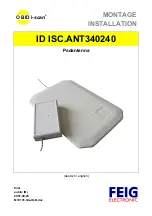
17
3.1.3 Feed Structure
The feed is the core of the whole antenna and its performances directly affect the RF
performance of the antenna. So the optimized scheme and design should be performed
more carefully. The feed is composed of corrugated horn and microwave network.
3.1.3.1 Corrugated Horn
Rx and Tx singles of the antenna share the same corrugated horn. It’s required to
realize ideal radiation at the Rx and Tx bands, with rotary symmetry and low cross
polarization radiation pattern and low VSWA characteristic.
The corrugated horn consists of input taper section, mode converter section,
transition section and output flare section. The transition section may include
frequency transition section and angle transition section. If the frequency band is
narrow, there is no frequency section. The principle block diagram is shown in Fig.3.1-
12. The purpose of the mode converter section is to well convert the main mode TE
11
in
the circular waveguide into the main HE
11
in the corrugated waveguide, at the same time,
maintain good match and reject the generation of the harmful high order mode EH
12
. The
transition section is to accomplish the transition of frequency and the angle between the
mode converter section and the output flare section, at the same time, reject the
generation of the harmful high order mode EH
12
. The output flare section is to generate
the required subreflector brim illumination level. The mode converter section is the key
design. The ring-loaded slots in the mode converter section are adopted to expand the
frequency band. The structural figure of the whole horn in C-band and Ku-band is shown
in Fig. 3.1-13 and Fig. 3.1-14, respectively.
Fig. 3.1-12 Corrugated Horn Block Diagram






































